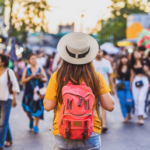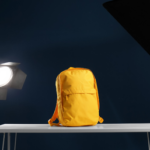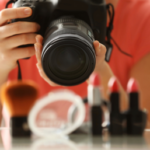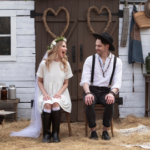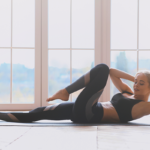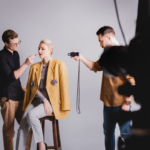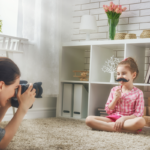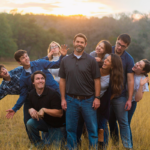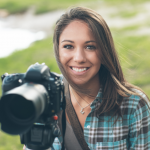Is child photography as easy as it looks?
10 Impressive Child Photography Tips
Children are always on the move and sometimes find it hard to sit still, even for a few seconds. Wouldn’t it be handy if you had a few tips to add to your arsenal so that you could easily take pictures of your subjects and come up with great results every single time? and (here are some great ways to monetize your photos).
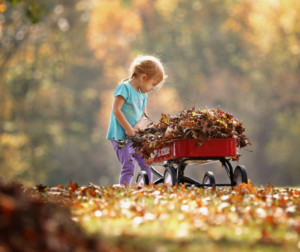
In this article, I’m going to share with you the tips I know for capturing the perfect photos with children.
Plan the Process and Familiarize with Your Gear
Although things may get a little out of hand while photographing children, try to plan as much as you can for the photoshoot. First things first, find out what kind of equipment you need for that particular photo session. If you plan on shooting indoors, have all the photo equipment you need with you.
The light inside the house or the building might not be as great as the lighting outside, and you might need extra gear to make things work. I would not recommend shooting with it indoors if you are using a point and shoot camera, simply because point and shoot cameras produce too much noise in low-light settings.
Camera Settings
What camera settings do you need to use? Since children are fast and spontaneous, they can’t always do what you want. Set your camera to a setting where you can easily control the process.
-
- Take pictures of children in the “Aperture Priority” mode. In this mode, you’ll be able to play with the depth of the field by changing the aperture, allowing your camera to choose the right shutter speed for you.
- In low-light environments, you may need to set your aperture to the smallest number (a fast lens with a large aperture such as f/1.4 helps a lot) in order to have a relatively fast shutter speed.
- However, if it gets darker and the light starts to fade, spike up the ISO a little. Even if the images are a little grainy, you might be able to capture a photo that’s worth the whole photoshoot. Keep in mind that it is better to have a sharp image with more noise than a blurred, noise-free image!
Let Photo Opportunities Present Themselves
Have you ever spent half an hour attempting to get a child to smile for a photograph without success? Then, a few minutes later, after you put your camera away, are you looking around to see them smiling?
Instead of setting up a scenario where you want a child to pose for a photograph, it can be a lot more helpful to let the child act more normally. In this situation, you would be there with your camera in hand, and you’d be ready to snap away when an excellent photo opportunity arises.
Get to Know Your Child Photography Subject
If you have time, try to get acquainted with the child before the photo session. Try to figure out what the child likes, find some common ground, be a friend of theirs. Don’t be another adult to tell them what to do. Stick to their level of innocence, playfulness, take their energy, and make them laugh by being stupid.
There is completely no need to ask the child to smile at the camera. Aside from having dull and fake images, you’re not going to get anything special. Let the child play and enjoy while you’re getting ready for the shot. Ask your parents to stand right behind you, then when you’re all set, either call your child or ask your parents to do it for you.
As soon as the child looks, focus on the nearest eye, and snap a picture. Remember, even without a smile, you can have some emotional and touching photographs. It is essential to build a bond with the child in order to achieve the best results.
Know Your Angles
While it is a general common rule to get down to the child’s level with a view to obtaining killer images, you can also try a few things against common rules. Snap some of the photos standing up, snap another one lying down, and snap another one sitting on the child’s level. Remember, creativity is a friend of yours.
You work with it. Try different angels; shoot the children’s clothing and favorite toys. After all, you’ve been creating memories for years to come. Sensitivity is a major part of child photography.
Choose the Right Location and Timing
Location is very important for great child photography sessions. Some of the parents let the photographer choose the location. I’m always looking for child photography venues in advance. This way, you’re going to know the good spots and plan your shots better.
While taking pictures, ensure there are no annoyances in the background. Watch for harsh objects and unattractive colors both in the background and in the environment.
Timing is another crucial factor for successful images. To avoid harsh shadows and numerous exposure problems, try taking pictures early or late in the afternoon.
Also, keeping the child comfortable is a good step towards getting a good picture. Happiness is hard to fake for adults, and children will not even try it.
Get Ready for Mood swings
Children might get very moody if they’re tired of being photographed. The kids might want to do something fun and different like to play another game or move to another location.
If you feel you haven’t had enough good photos, talk to the parents and see what other approaches you can take. Act a little stupid to cheer the child up. The last giggle you capture could be the best photo of the day.
Photographing Babies: Be Generous with Props!
One of the biggest challenges you have to face when photographing babies is getting them to look in your direction for more than a second. The best way to get around this is to make use of a prop, such as a toy or a teddy bear, and try to get the attention of the child.
But it’s worth it, though. The smiling picture of the baby is something that the family will cherish for years to come. And if you can learn how to get a smile out of your babies reliably, you will be remembered and recommended by your parents for years to come.
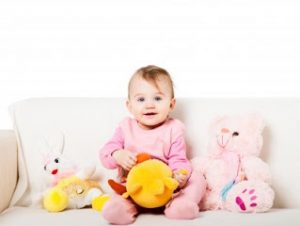
Go Macro
We all love newborn babies because they’re adorable and small. Although they’re cute, they’re also made up of many cute little body parts that present a photographer with an array of wonderful subjects–especially if you zoom in on them.
If your digital camera has a macro mode or if you are lucky enough to have a purpose-built macro lens, use it to identify a specific body part (like a hand, an ear, a foot, a mouth, etc.) and use it as the full focus of your shot.
Doing this emphasizes the detail that is often missed in the shots that many of us take, and you’ll find that your entire collection of photos is beautifully punctuated and can even make excellent feature shots.
Bottomline
If you are a budding photographer or just want to get the best portrait photos possible of children, you must make it interesting and fun! Making child photography sessions enjoyable means that your subjects will want to do it again, and again!
Get them involved and let them take some pictures of you, too, for a change! Show them all the photos afterwards and help them choose the ones they like best or how to edit them. Child photography is fun, but it needs a few tricks and strategies to make each session fruitful and productive.
Lastly, market your photos on social media to get new clients! But don’t forget to use Watermarquee, a premium watermarking tool online to watermark your photos so no one else can claim them!





